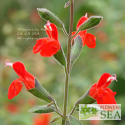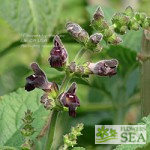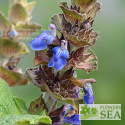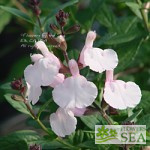(Puna Sage) The deep violet-blue flowered Salvia calolophos has white beelines and oblong, mid-green leaves. It is a high-altitude native of northern Argentina.
This petite, mounding sage is from the Puna region of the Argentine Andes. Puna Sage is rare in the horticultural trade.
As to its species name, calo means beautiful in Latin and lophos refers to a crest, such as the plume on a helmet. Calolophos most likely refers to the plant's flower spikes, which bloom abundantly at their tips to create a plume-like look.
Growing Puna Sage is challenging. In its home environment, it thrives in rocky soil with excellent drainage. Although it prefers average watering based on local growing conditions, this is a sage that seems to like its soil to dry a bit before watering.
As a subshrub, this Salvia combines both soft herbaceous and woody growth. Winter chill may cause it to die to ground, but it will reemerge the next growing season. Similar to most sages, this is a deer-resistant species.
The Salvia genus is part of the huge mint family (Lamiaceae). American botanist and Lamiaceae expert Carl C. Epling (1894-1968) gave Salvia calolophos its scientific name in 1935.





